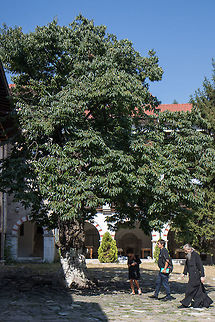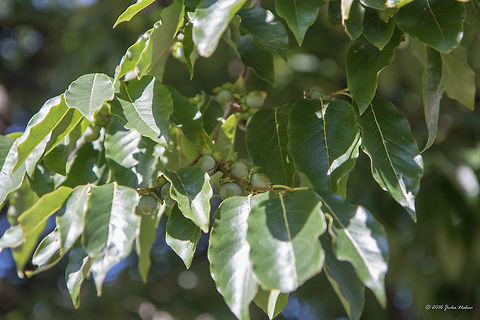
Appearance
This is a tree height of 15–30 m with sloughing of aging bark.The leaves are shiny, leathery, oval shape with pointed ends, 5–15 cm long and 3–6 cm in width.
The flowers are small, greenish, appearing in June to July.
Fruits are berries with juicy flesh, yellow when ripe, 1–2 cm in diameter. Seeds with thin skin and a very hard endosperm.

Distribution
The species area extends from East Asia to the west of the Mediterranean, down to Spain. The Date-plum is native to southwest Asia and southeast Europe. It was known to the ancient Greeks as "the fruit of the gods" i.e. ''Dios pyros'' , hence the scientific name of the genus. Its English name probably derives from Persian ''Khormaloo'' خرمالو literally "Date-Plum", referring to the taste of this fruit which is reminiscent of both plums and dates. This species is one candidate for the "lotus tree" mentioned in ''The Odyssey'': it was so delicious that those who ate it forgot about returning home and wanted to stay and eat lotus with the lotus-eaters.The tree grows in the lower and middle mountain zones in the Caucasus. They usually grow up to 600 m above sea level. In Central Asia, it rises higher—up to 2000 m. They rarely grow in stands but often grows with the frame, ash, maple and other deciduous species. It is not demanding on the soil and can grow on rocky slopes but requires a well lit environment.
It is cultivated at the limits of its range, as well as in the U.S. and North Africa and also in Pakistan.
Habitat
The species area extends from East Asia to the west of the Mediterranean, down to Spain. The Date-plum is native to southwest Asia and southeast Europe. It was known to the ancient Greeks as "the fruit of the gods" i.e. ''Dios pyros'' , hence the scientific name of the genus. Its English name probably derives from Persian ''Khormaloo'' خرمالو literally "Date-Plum", referring to the taste of this fruit which is reminiscent of both plums and dates. This species is one candidate for the "lotus tree" mentioned in ''The Odyssey'': it was so delicious that those who ate it forgot about returning home and wanted to stay and eat lotus with the lotus-eaters.The tree grows in the lower and middle mountain zones in the Caucasus. They usually grow up to 600 m above sea level. In Central Asia, it rises higher—up to 2000 m. They rarely grow in stands but often grows with the frame, ash, maple and other deciduous species. It is not demanding on the soil and can grow on rocky slopes but requires a well lit environment.
It is cultivated at the limits of its range, as well as in the U.S. and North Africa and also in Pakistan.
References:
Some text fragments are auto parsed from Wikipedia.